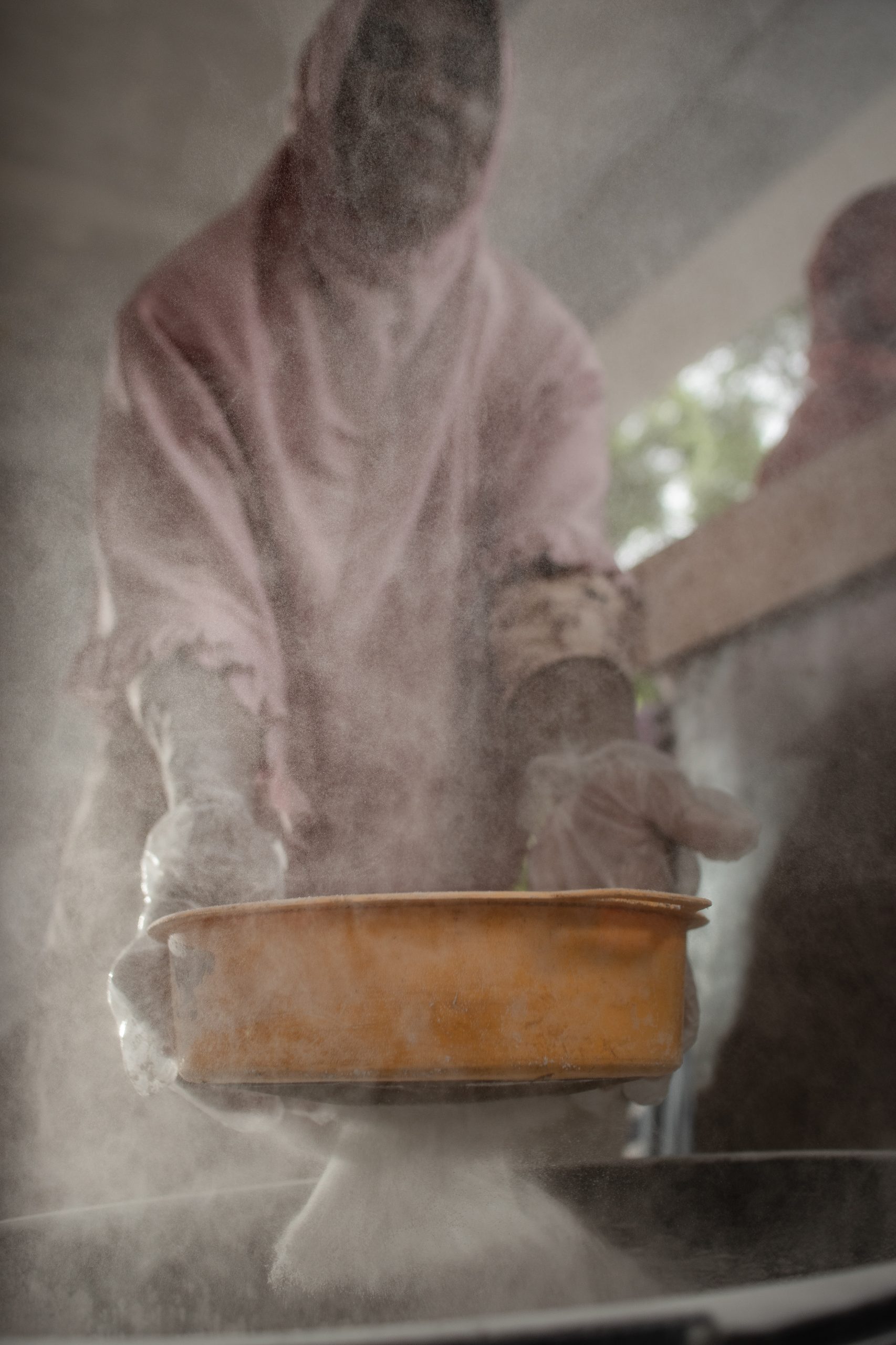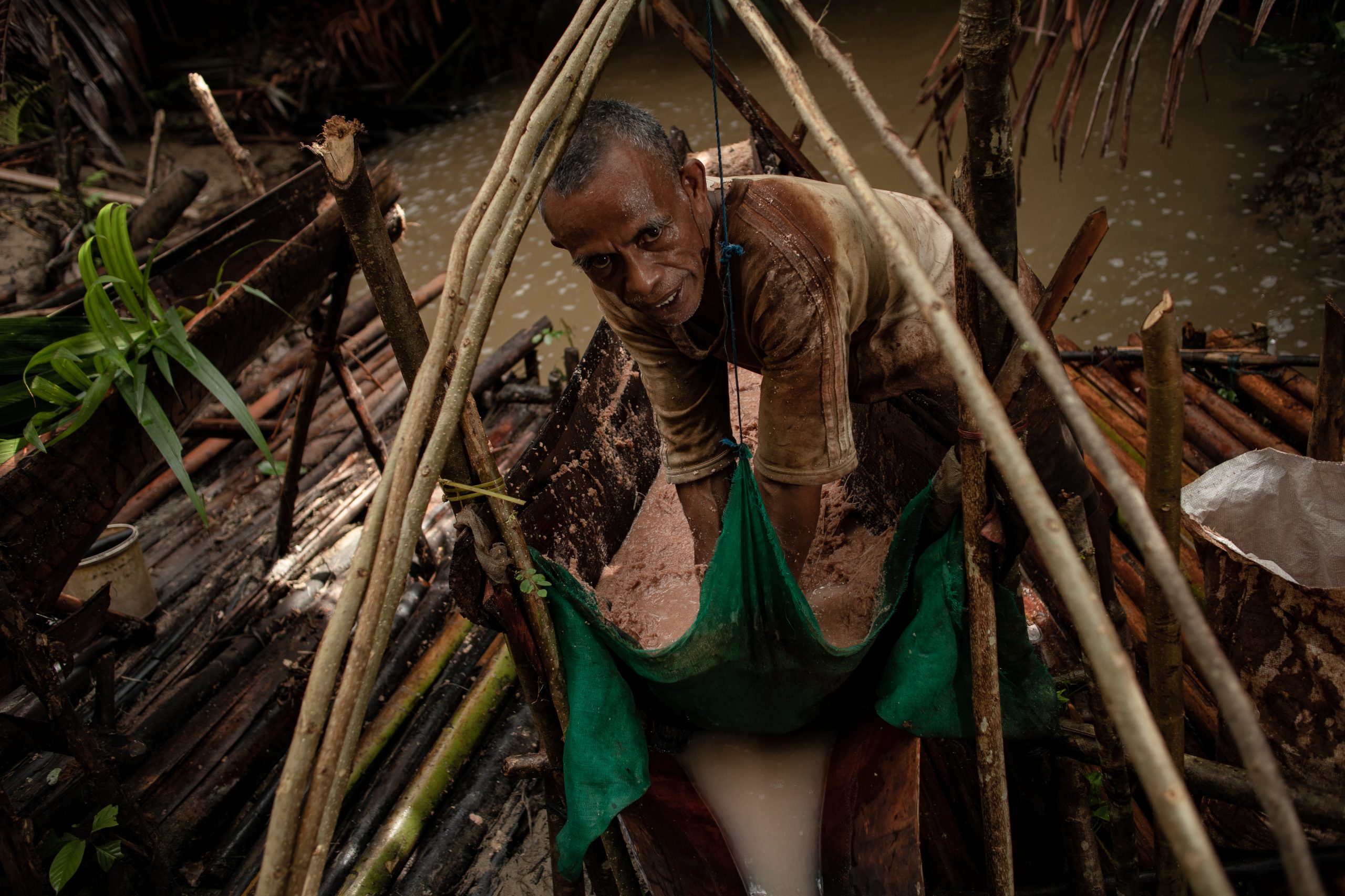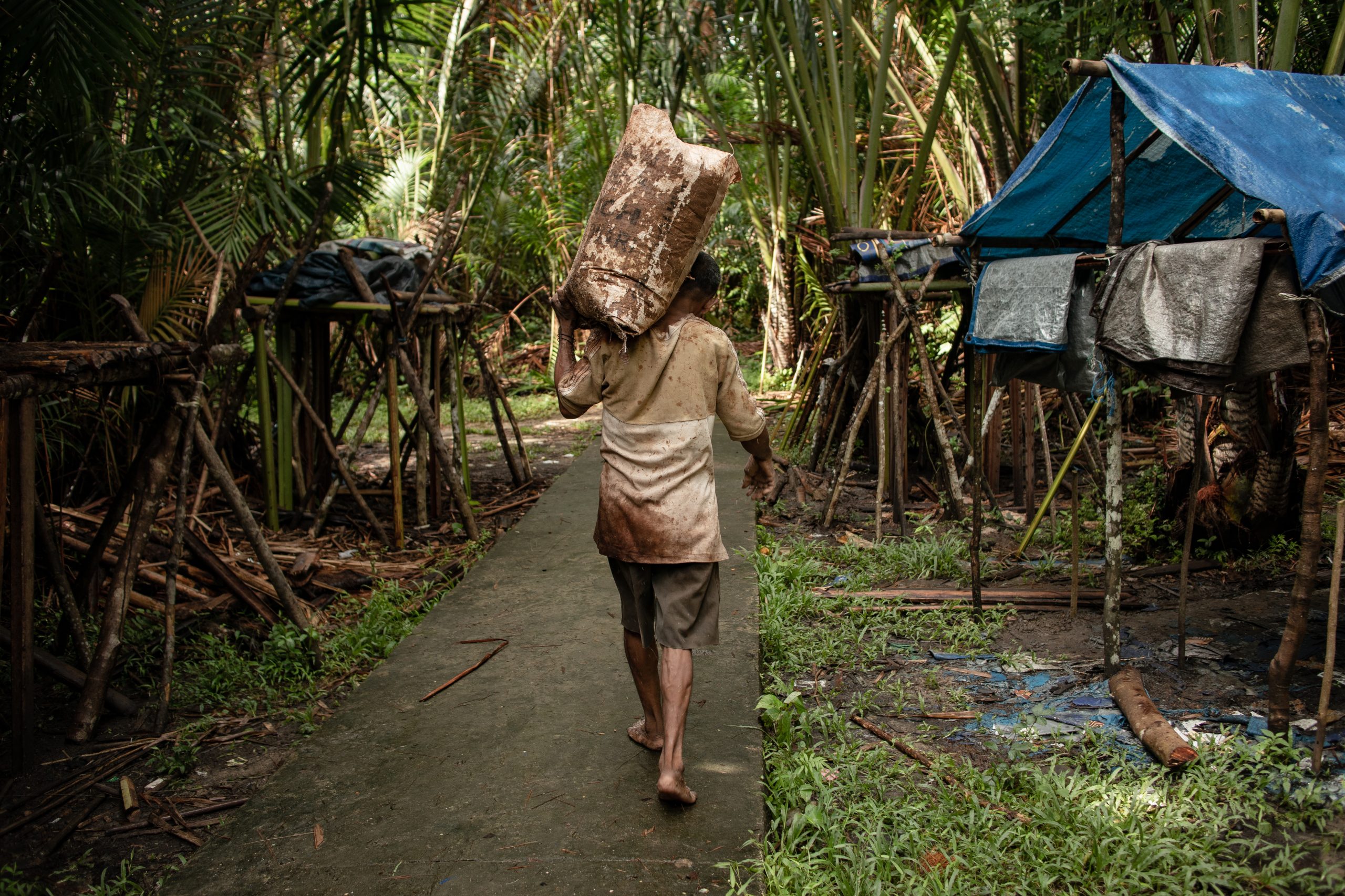
Eight women were seen around a giant oven, 150 centimeters long and 50 centimeters wide. This oven covers two kerosene stoves that burn constantly. On top of it, white sago flour is stirred nonstop by hand for over two hours. They stood patiently, wearing transparent gloves, making sure the flour dried evenly. This flour is used for making cookies and cakes.
Yulianti Muhammad Yamin, one of the sago processing women, said the people of Kilotak first learned about processing sago into flour after participating in a training organized by the BangKIT Program team in 2024. Previously, sago was consumed as a staple food and sold as raw sago.
In that place, people did not know that sago flour could be used as an alternative to wheat flour in making cakes. “In the past, we did not know how to process raw sago into flour. After the BangKIT program came, the ladies were aware of it,” said Yulianti.
Even though the training is over, the women routinely meet at the village office to share knowledge and redo the recipes. Yulianti admitted that it took several attempts before she successfully made cakes from the sago flour. At first, she failed because of the incorrect measurements. She kept trying and finally made it.
“I didn’t know the recipe, so I tried several times and finally made it,” she said.
New Knowledge
Sago has long been a staple food in Kilotak Village, Seram Bagian Timur District, Maluku Province. Most of the people work as sago farmers. The population in 2024, according to data from the Central Statistics Agency of Maluku Province, was 242 people. Pulau Gorom Sub District has a flat topography with a size of 91.30 km². Yet, sago is only for daily consumption and is sold in raw form.
In the planning process of Kilotak Village at the end of 2023, facilitated by the Inclusive Rural Community Livelihood Development Program in Eastern Indonesia (BangKIT), the abundant sago trees in the village were identified as a potential resource to develop. Hoping that sago trees become a commodity with economic value in the future and improve the lives of the people in Kilotak Village. Support is needed for the community to learn sago processing to increase its value added, as it is sold raw. Therefore, technical training on sago processing became one of the proposals in the plan to develop the potential of Kilotak Village, which is then supported by the BangKIT Program.
After joining the training on sago processing supported by the BangKIT Program, around 20 women in this village are now capable of processing sago into flour and making various cakes. Yulianti said that the training gave them a new insight. In addition to being more economical, using sago also reduces dependence on external foodstuffs. Let alone ingredients for making cookies and cakes.
“Thank God, less spending. One kilogram of flour costs 14 thousand rupiahs, now I know how to make sago flour,” she explained.
Irianti Hakim was also one of the training participants. She attended all sessions during the three-day training by the BangKIT program. After the training, Irianti admitted that she immediately practiced making brownie and nastar cookies from sago flour during Ramadan. “Failures do happen. I once applied too much sugar. I tried making cookies and brownies while breaking the fast,” she said.
Irianti said simple measurements will make it easier for everyone to process sago flour into cakes. For example, you need 100 grams of sago flour for brownies and 750 grams for nastar cookies. Using sago flour will reduce spending on flour. The ladies only need to buy the other ingredients, such as butter, eggs, and sugar.

Sago into Flour
Although making cakes from sago flour is relatively easy, the process of turning raw sago into flour is quite tiring. Yulianti explained that raw sago that has been squeezed needs to be washed first, then filtered from dirt, and dried in the sun for 15 minutes.
Next, sago is transferred to a hot oven and stirred continuously for two to three hours to dry evenly. “It should not be dried in the sun for too long, otherwise it turns yellow,” said Yulianti. “The process merely takes place on the oven.”
The large oven currently in use is a stimulus from the BangKIT Program, placed in the village office so everyone can use it, especially for big events or productions. The oven was delivered after the ladies submitted a request to the Program team.
Similar to Yulianti, Irianti said that stirring sago flour for two to three hours cannot be done by one or two people. It requires a lot of energy to dry the flour evenly. “It cannot be done by just one or two people. It must be done by a bunch of people. If it is not relentlessly stirred, it will turn into papeda,” she giggled.
Dream to Launch the Products
After mastering the process of making sago into cakes, the women’s group in Kilotak expects more. They dream of selling the products outside the village. Yulianti said support from the district government is needed to realize the dream, such as facilitating village products in SME exhibitions or promoting them.
“So far, the support comes from the BangKIT team only. We are very grateful. No intervention from the government yet,” she said.
They also hope for more ovens to produce more sago flour. The current one cannot dry sago flour on a large scale. Let’s say, five kilograms of flour must be dried twice on the oven.

“We want to produce more and sell it,” she said. Despite the BangKIT Program termination, this women’s group wants to sustain the work. They want to develop the products to earn an extra income for the ladies.
Irianti expressed similar ideas. She hopes the Village Enterprise (BUMDes) can help with the marketing, while the ladies work on the products. “BUMDes serves as the collector, the ladies will do the work,” she said.
Connection with Farmers
Although the majority of the community are sago farmers, housewives who produce flour still have to buy sago because some do not have sago trees. And some do have trees, but cannot harvest immediately because it takes more than five years for the sago to yield.
“If I want to make flour, I buy sago from the farmers. I do not have sago trees. Unlike those ladies whose husbands have sago,” said Yulianti.
Rustam Kilolow, a man born in 1976, is one of the sago farmers in Gorom Island. He has been working since his childhood, following in his parents’ footsteps. He explained that one sago tree can produce 30-50 tumangs. One tumang weighs 5-6 kilograms. Tumang is a traditional wrapper made of rumbia leaves to store squeezed wet sago.

“It used to be done manually, now we use a machine to grate it. It is, then, squeezed in a cloth,” Rustam explained while squeezing the sago.
We met Rustam while harvesting sago. He had cut the large sago trunks into small pieces and then grated them with a machine. After that, the small sago trunks were put into sacks. He carried the 25-kilogram sack to the riverbank for squeezing. The distance of the grating machine from the river for squeezing was only 10 steps away.
Four ladles of water were poured into the sago, then squeezed until the water was clear. After that, Rustam threw the sago pulp to his left side. After finish squeezing, he left it for three minutes, spilled the water and collected the sago flour.
In a day, he claimed he can squeeze up to three sacks of sago, producing around six tumangs. The price of one tumang is 50 thousand rupiahs. So, he makes 300 thousand rupiahs a day.
Rustam described that sago is massive in Gorom Island. In addition to being a staple food, sago is also a source of life. Buyers from outside the village often come with millions of rupiahs to buy sago directly from the farmers. These buyers come from neighboring villages, they come directly to the farmers’ gardens.
